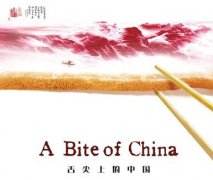美国一个车牌引发的“血案”Should America ban 'offensive' lic(2)
编辑:高中作文网 阅读 次
但是接下来的事让“新奇的”车牌问题从德克萨斯州的高速公路上下来,进入了美国最高法院。
The Sons of Confederate Veterans, sponsors of the controversial plate - went to the US Court of Appeals for the 5th Circuit, where they successfully argued that to reject their design was to restrict their right to free speech - protected by the First Amendment.
这是因为该车牌的赞助者——南部联盟士兵遗孤组织到美国第五巡回上诉法院起诉,称根据美国宪法第一修正案,不准他们使用这个设计限制了他们的自由言论权,随后胜诉。
The case now stands before the nine Supreme Court justices - who must consider how the rights of constitution apply within these 12in-by-6in (30.48cm-by-15.24cm) metal plates.
如今,这个案子摆在了最高法院的九大法官面前,他们必须考虑宪法赋予的权力如何应用到这块长12英寸宽6英寸(长30.48cm宽15.24cm)的铁皮上。
How did it come to this? How did an object so utterly dull as a vehicle registration plate become a battleground for the rights of Americans?
事情是如何发展到现今这个地步的?为什么这么一块无聊透顶的车牌演变成了美国人权的战场?
"What began as reasonable self-expression has become divisive and confrontational," says Dan Neil, automotive columnist at the Wall Street Journal.
《华尔街日报》汽车专栏作家丹·尼尔说:“这是因为合理的自我表达演变得具有分裂意义和对抗性。”
Emblazoning the Confederate flag on your car "is like waving a red rag to a bull - they're daring you to be offended by their politics", he says.
把南部联盟的国旗绘制在车牌上无异于“在公牛面前抖动红布,这是一种政治挑衅”。
The story of licence plates begins at the turn of the 20th Century, when the first "horseless carriages" began careering around towns - frightening children and causing anxiety for authorities.
车牌的历史起源于20世纪初——当时第一辆“没有马的马车”开始在城里横冲直撞,吓坏了儿童也让当局紧张。
In 1907, the state of Texas decreed that all motorised vehicles must be registered - and drivers must display their digits.
1907年,德克萨斯州规定:所有机动车辆一律需要登记,司机必须展示车牌号。
Many of the first plates were entirely personalised - crude homemade efforts, cobbled together from wood, roof tiles and even leather.
很多第一批车牌都是完全个性化的——它们是粗糙的手工制品,用木头、瓦片甚至是皮革拼在一起。
Jump forward to 2014 and license plates brought in $17.6m in revenue for the Texas state authorities - drawn from two distinct types of plates.
时间转到2014年时,两种类型的车牌每年给德克萨斯州创收1760万美元。
Personalised "vanity" plates allow drivers to select a configuration of up to seven characters - typically spelling out a nickname, or humorous slogan - often something on the cheeky side.
个性化的“浮夸”车牌允许司机们最多选择七个字母进行组合——比较典型的有昵称绰号和幽默标语——通常都没什么下限。
These are not the subject of the dispute in the Supreme Court. The case relates to the other type - "specialty plates" - which carry pictures, symbols and slogans supporting a cause or an organisation - often a charity campaign, a university, or a sports team.
这些不在这次最高法院论战的范围。这个案子涉及的是另外一种车牌——特色车牌——上面带有一些图片、符号以及支持一些事件或者组织的标语等,通常这些组织都是慈善团体、大学或者是运动队。
These groups apply to the state to have their specialty plate authorised to be licensed to motorists for an additional fee - which raises funds for the state and the organisation.
这些组织向州政府支付额外费用,申请制作自己的特色车牌给司机使用,为该州和组织筹集资金。
Texas offers 385 varieties of these specialty plates - among which the most popular topic is the US military and its veterans - 92 of these plates pay tribute to them.
德克萨斯州提供385种特色车牌,其中最受欢迎的主题是美国军方和退伍老兵,92种车牌是歌颂他们的。




